
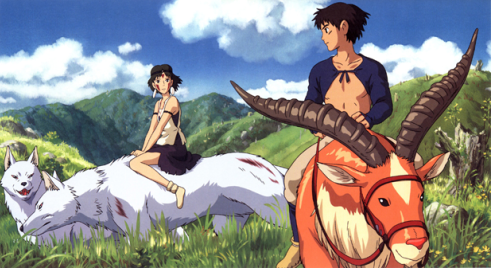
10. Studio Ghibli - I’ve already spent plenty of time on this list covering a fraction of Ghibli’s fascinating industry path, and I have more to say about Hayao Miyazaki later in my #4 studio, so I’ll just say that the only thing keeping Ghibli from being higher on the list is that their quality is unparalleled, but their quantity is eclipsed by other equally impressive forces in the animation industry. Castle in the Sky, My Nieghbor Totoro, Kiki’s Delivery Service, Porco Rosso and many of their other creations redefined how 2D storytelling should be done, and everyone should see all of their films. Most will love Spirited Away, but Princess Mononoke is one of my favorite movies of all time, and Grave of the Fireflies is easily their most underrated film. If you enjoyed Ponyo from them recently, then you’ll also love their newest film, The Secret World of Arrietty. It pains me to let influential quantity beat out influential quality, but until I see kids in the mall ditching their Shrek shirts and Harry Potter school supplies for Ghibli apparel, I unfortunately have to admit that it’s the sad truth, and the best I can do is try to get my little cousins interested in other studios on this list. Directors Isao Takahata, Tomomi Mochizuki, Yoshifumi Kondo, Goro Miyazaki, and Hiromasa Yonebayashi also deserve applause.
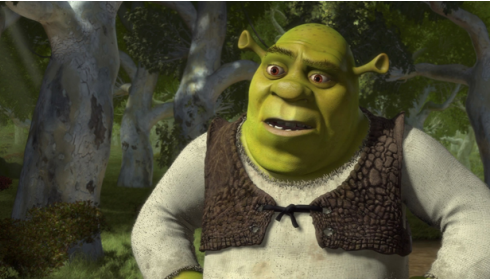
9. Pacific Data Images - This computer animation studio was created in 1980 and, after three years of negotiations, DreamWorks SKG bought 40% of their company and changed the name to PDI/DreamWorks. This makes PDI the unsung heroes who are responsible for the ridiculously lucrative half of DreamWorks Animation SKG’s filmography that cracked Earth like an egg shell. Together they made Antz, seven Shrek films, Shark Tale, several Madagascar films, Over the Hedge, Bee Movie, Kung Fu Panda (shout out to Reel FX), Monsters vs. Aliens, MegaMind, and recently received its highest praise since Shrek for their work on How to Train Your Dragon. Shrek has gone on to become the second highest grossing film franchise in box office history. Gruesome fact: Executive producer Jeffrey Katzenberg left Disney in 1994 to form DreamWorks on the exact same day that John Lasseter pitched the idea for A Bug’s Life, which Disney’s Pixar would go on to make. Lasseter felt betrayed when he learned about Antz and that it was even scheduled for a release before A Bug’s Life. You can read more of the treachery here. Their “Disney feud” would continue by countering Finding Nemo with Shark Tale, and opposing The Wild with Madagascar.
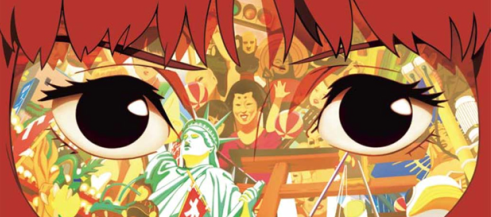
8. Madhouse - Madhouse has carried the anime industry on its back for four decades as it created over 200 monumental movies and fully fleshed TV series. It’s not them standing on the shoulders of giants, it’s giants hanging from their colossal shoulders. I can and will list pivotal titles like Akagi, Battle Angel, Beck: Mongolian Chop Squad, Beybalde, Cardcaptor Sakura, Claymore, Death Note, The Girl Who Leapt Through Time, Gungrave, Kaiji, Metropolis, Millennium Actress, Monster, Ninja Scroll, Paprika, Paranoia Agent, Perfect Blue, Rideback, Summer Wars, Texhnolyze, Tokyo Godfathers, Trigun, and Vampire Hunter D, but I’m still omitting dozens of highly acclaimed classics that pushed the anime industry ahead in respect, acceptance, and global influence. If you were to divide the anime industry into ten tiers, the third tier would be filled with studios I’ve already highlighted, the second tier would be empty, and Madhouse would be alone at the top. Fun fact: If you’re reading this list thinking who in the world watches anime and reads manga, well besides millions of people across the globe, so does James Cameron. Also, Satoshi Kon’s Madhouse films have influenced a few of Darren Aronofsky’s films, and even Christopher Nolan’s Inception. Rest in peace, Satoshi.

7. Hanna-Barbera Productions - Animators William Hanna and Joseph Barbera founded this animation studio in 1957 after years of work on Tom and Jerry for MGM, and their company completely and utterly dominated North America’s television sets for half a century. Over the 1950s, 60s, 70s, 80s, and 90s, HB stormed the world with these classics: The Ruff & Reddy Show, The Flintstones, The Yogi Bear Show, The Jetsons, Johnny Quest, Space Ghost, Scooby-Doo, Where Are You!, Josie and the Pussycats, the 1973 Charlotte’s Web film, The Addams Family, The Flintstone Kids, Bill and Ted’s Excellent Adventures, and The Smurfs. In other words, your grandparents watched their shows, your parents watched their shows, you watched their shows, and your grandchildren will one day watch their shows on TV as well. Flintstones was the longest running animated show in American prime time television history until it was beaten out by The Simpsons in 1996. After William Hanna died of throat cancer in 2001, Hanna-Barbera's animation studio was taken over by Warner Bros. Animation, with the Cartoon Network licensed projects handled by Cartoon Network Studios. Joseph Barbera continued to work for Warner Bros. Animation until he died in 2006 at the age of 95.
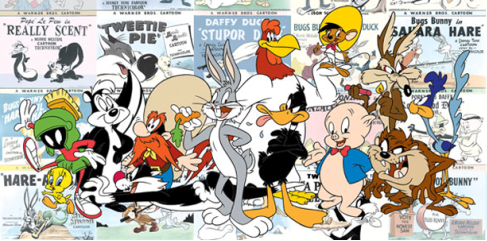
6. Warner Bros. Animation - As a major contributor to the Golden Age of American animation, it all began when animators Hugh Harman and Rudolf Ising left Walt Disney’s studios and created Bosko, the Talk-Ink Kid in 1929. American film producer Leon Schlesinger was impressed, and Warner Bros. agreed to distribute their series. With the help of Leon they created Looney Tunes, and their second series, Merrie Melodies, followed in 1931 to compete with Disney’s Silly Symphonies short films. Porky Pig emerged in 1935 thanks to director Friz Freeling and animator Bob Clampett, who would also create Daffy Duck in 1937 with Tex Avery as the director. This marked a new “screwball” direction for their art, which set out to replace traditional “everyman” characters such as Mickey Mouse and Popeye. Thanks to Ben "Bugs" Hardaway (who later created Woody Woodpecker at Walter Lantz Productions) and others, Bugs Bunny emerged in 1940, and after Leon left in 1944 the studio changed its name to Warner Bros. Cartoons. It wasn’t until 1980 that it finally became Warner Bros. Animation, which exists to this day. You can peruse through their four decades of work here.

5. Nickelodeon Animation Studios - I really wanted to include each of the illustrious small animation studios that have created shows for Nickelodeon, but there just wasn’t enough room on this list. Nickelodeon is the iconic company of our generation, and it has introduced hundreds of millions of children to the American culture they were born into. It didn’t provide escapism like most studios on this list did; it taught us what to expect as we grow up in this world, and prepared us for life’s obstacles while still instilling us with vivid imaginations. They were like parents to us. Decades have passed and the effects are still being discovered and dissected. Nickelodeon Animation Studios has a long and rich history of interesting industry stories, and I urge you to read through them all on your own time. Before moving on, here are some of the many names that deserve praise: Rugrats (Klasky Csupo), Doug (Jim Jinkins), The Ren & Stimpy Show (John Kricfalusi), Rocko’s Modern Life (Joe Murray), Hey Arnold! (Craig Bartlett), The Angry Beavers (Mitch Schauer), CatDog (Peter Hannan), SpongeBob SquarePants (Stephen Hillenburg), The Fairly OddParents (Butch Hartman), Invader Zim (Jhonen Vasquez), The Adventures of Jimmy Neutron: Boy Genius (DNA Productions), and Dora the Explorer.
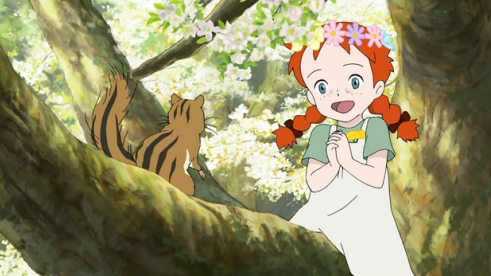
4. Nippon Animation - Being influenced is what this list is all about, and as an American, when you say Alice in Wonderland or Peter Pan, I instantly think of American animated versions of those stories because that’s what I grew up with. However, had I lived in Japan, Nippon Animation would have been the animation studio that shaped my emotions, humor, and imagination. They made their own versions of classic tales like Jungle Book, Arabian Nights, 3 Musketeers, Alice, Pinocchio, and almost a hundred other shows that spanned 20, 50, or sometimes even 100 episodes. More importantly, I haven’t even mentioned their World Masterpiece Theater yet, which was a Japanese TV staple that ran on Sunday nights from 1969 to 1997, and has recently resumed up again in 2007. Imagine if our TGIF specials were filled with Disney animated shows every week for three decades; that’s what Nippon Animation provided for Japan. Even more astounding is that most people don’t realize this is the company that Hayao Miyazaki worked at for a decade before joining Topcraft and starting Studio Ghibli. They also created Maya the Honey Bee, Hunter x Hunter, Bosco Adventure, Future Boy Conan, Little Lulu and Her Little Friends, 47 more Grimm’s Fairy Tale Classics adaptations, and the culture influencing series Animated Classics of Japanese Literature. Nippon Animation directly and powerfully influenced not only Hayao Miyazaki, not just a nation, but an entire generation, and the effects of their work are still being felt to this day.

3. Pixar - Earlier, I could only criticize Studio Ghibli for having massive quality but not massive quantity, and while Pixar may be guilty of that as well, they have changed the entire focus of the animation industry from 2D to 3D in a manner that bookmarked the end of one era, and the birth of a new one. Until we have virtual reality machines or find an entire new medium of art to tell stories in, Pixar shaped the entire entertainment industry in a way that we won’t see again in our lifetime. 3D works influenced by Pixar are so abundant these days that it’s easy to forget that 3D animations never even existed not too long ago. Its 12 films and 20 short films have gone on to earn 26 Academy Awards and over $6.3 billion worldwide so far, which explains why Disney bought Pixar in 2006 for $7.4 billion in hopes that it will continue rendering CGI circles around the rest of the industry. Sad fact: After divorce financially crippled George Lucas, he sold Lucasfilm Computer Graphics, which was acquired by Steve Jobs in 1986, and later became Pixar.
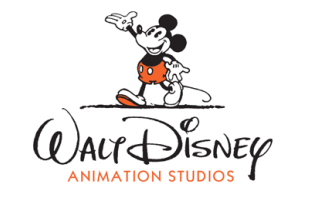
2. Walt Disney Animation Studios - Disney is so influential that I don’t even need to list a single one of their 50+ films since everyone reading this can probably recite half of them on the spot after watching and rewatching their animated classics so many times in their life. Add in their thousands of animated short films and you’ve got almost 100 full years of influence on not only the animation industry, but humanity itself. Disney’s momentum has slowed in the past decade, but now that they’re finally creating 3D animated films we’re undoubtedly in for another century of influential animation. If you actually took the time to read through my entire 100 studio list, then you’ve seen how influential Disney was with other studios over the years, and I could write an entire book on just Disney’s “Nine Old Men” animators. Dangerous challenge: If you’re really courageous, press and hold the down key on your keyboard and try to scroll through all of their short films to see if you can make it to the bottom. Seriously, try it. Actually, don’t do that, because you’ll probably pass out and not be able to read about the #1 most influential animation studio of all time . . .

1. Industrial Light & Magic - Pixar is the pixel profits paradise that paved the way for the entire 3D industry. Disney was the deity that’s responsible for the entire 2D industry. ILM is the visual effects empire that changed our planet’s entire entertainment industry, and each year it grows stronger. Founded in 1975 by George Lucas after not being satisfied with the film industry’s level of skill, their very first project was Star Wars, which is arguably the most influential film of all time. Since then, ILM has worked on almost 300 box office film behemoths, and its recent work list is larger than the entire portfolio of most VFX studios. Take a minute to scroll through all of ILM’s work. Terminator 2 wasn’t possible without them. Jurassic Park never would have been a timeless classic without their dinosaurs. They created entire 3D main characters back when Hollywood was still trying to figure out how 3D technology worked. While Pixar was busy playing with simple 3D toys they were creating lifelike 3D dragons. They made their own render and motion capping software that other top VFX studios have relied on just to exist. They also have one of the largest render farms on the planet, which they used to work on Avatar’s vehicles, climax battle, and a new way to generate high detail digital explosions. Yes, after decades of 3D graphics, ILM is still coming up with brand new ways to make things explode. You don’t see ILM movies; you experience them. While Disney, Pixar, and others create one big hit every year or so, ILM is responsible for just about every journey you’ve ever gone on inside a movie theater, and each year they bring ten new worlds to life. The only way I could rank a studio higher than ILM on this list is if I was including the inventors of the camera or computer. ILM is the pinnacle of the human brain’s ability to create art.
Honorable Mentions: Don Hertzfeldt, Tomasz Bagiński, Chris Landreth, James Stuart Blackton, Winsor McCay, Charles-Émile Reynaud, hundreds of other studios, and thousands of other artists! I wish I could list you all!
If you read my entire list, then thank you for joining me on this adventure through the animation industry. If you ever feel the need to be inspired, then I encourage you to come back and flip through these industry defining studios again in the future. Maybe one day I will have to modify it to include your animations!
